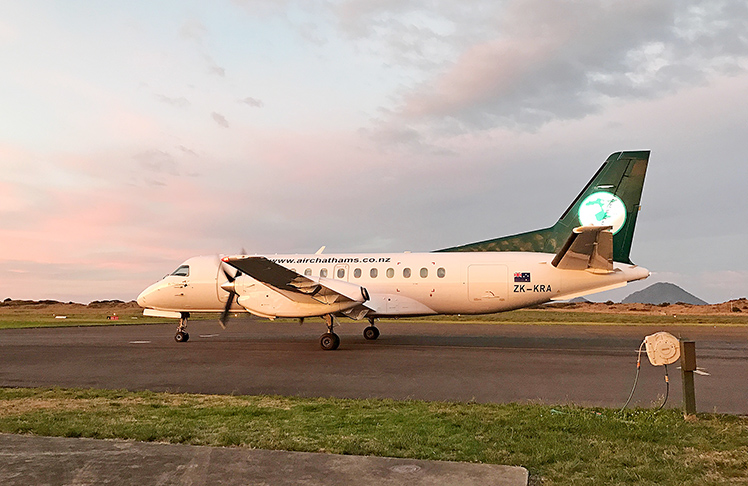Letters: Cheeky demands from Air Chathams

.
J Beattie
I have to admire the audacity of Air Chathams’ Duane Emeny. Going by Friday’s Beacon, “Air Chathams may pull Whakatāne” route, the company is rapidly losing money, but he expects the Whakatāne District Council to underwrite a loan to buy him a new plane.
Who knows if he will be able to pay it back because he also wants them to forgive the $350,000 they have already lent him.
The council is meeting next month to decide on his demands and Duane thought that rather than show appreciation for the support already given, it would be a winning strategy to publicly attack the council and the local community as well.
He told us that Air Chathams recently decided to implement a schedule change that they knew wouldn’t meet the needs of business travellers – the most lucrative part of the market.
Yet, according to Duan, it is locals that are to blame for half-empty planes.
Like most people I know, I go out of my way to book with Air Chathams if I can.
The schedules often don’t suit me, and the airline has a history of cancelling flights at the last minute, but I try to fly with them if possible.
I support them for taking over when Air NZ pulled out of Whakatāne, but reading Duane’s griping in the paper was a slap in the face.
Air Chathams is a private business, in it to make money, and good on them, but I do not want my rates spent on propping up somebody’s failing business.
Instead of demanding a handout, maybe they need to look at how they run their company and why they are struggling.
* Duane Emeny, chief commercial officer, Air Chathams, responds
Thank you for your letter.
I’d like to provide some context to the situation and clarify why Air Chathams has made this a public issue.
For the past two-and-a-half years, we have been working with Whakatāne District Council (WDC) on a plan to ensure the continued viability of the Whakatāne route when we retired our ageing 18-seat Metroliner fleet.
We flagged this issue early so that, in partnership with WDC, we could develop a plan to transition from the smaller Metroliner to a larger Saab aircraft, thereby ensuring uninterrupted service.
This would involve sourcing and purchasing a Saab, marketing the upgraded service and aircraft, and providing sufficient time (6-12 months) to allow for the new aircraft, revised schedule (with business-hour flights retained), and increased seat capacity to settle in. This period, which is typical in the airline industry, would involve initial losses as we grow the market.
WDC executives supported the plan and engaged a consultant to help work out the details. However, by mid-2023, when it became clear we were running out of time, WDC informed us that they would not be able to assist Air Chathams with access to funds at LGFA rates to purchase the new aircraft.
At this point, we shifted our focus to proposing a commercial underwrite for the service instead. Throughout this process, we remained open and transparent, fully sharing our financials with WDC. However, we encountered slow and often challenging feedback from the council’s commercial management team and the new consultant. In fact, we only received their underwrite proposal the day before we had to present it to council. While the councillors supported aeronautical relief and marketing funding, they voted against the underwrite.
This left Air Chathams in a difficult position: either we would have to discontinue the route when the Metroliner was retired, or we would have to adjust the schedule with the limited availability of a Saab and take a risk on the outcome. We chose the latter and informed the council that we would monitor the route until March 2024 (the end of our financial year). Ultimately, we extended the route for another full year, which brings us to the present situation.
I do believe that the council could have done more to support us. Air Chathams stepped in when Air New Zealand withdrew and fought for years to make the route profitable, with the smaller plane operating 38 weekly flights. We then weathered the pandemic, successfully working with the central Government to secure funding that kept both the airline and its routes operational during that challenging time. It’s worth noting that the financial support from the council didn’t come close to the level of support provided by the central Government.
While we needed to simplify our fleet, we made a deliberate decision not to close the Whakatāne route. Instead, we engaged with the local body that initially brought us in under a competitive tender process, seeking a solution that would provide the Eastern Bay with a significantly improved air service and a platform for future growth. Unfortunately, without the necessary support in the early stages, we could not reach that long-term potential. That’s why the service is now seriously under threat.
There is still a way forward, but it requires a shift in the relationship and attitude. We need to move to a place where we are genuinely working together to sustain this route and grow it into the sustainable service it once was.